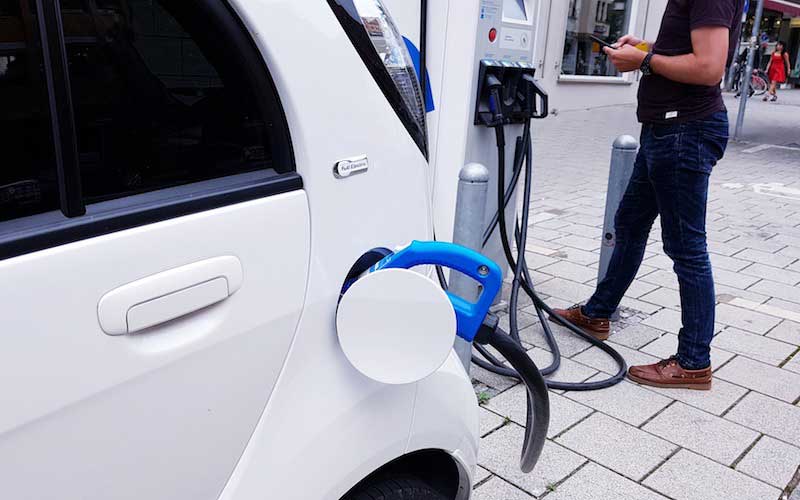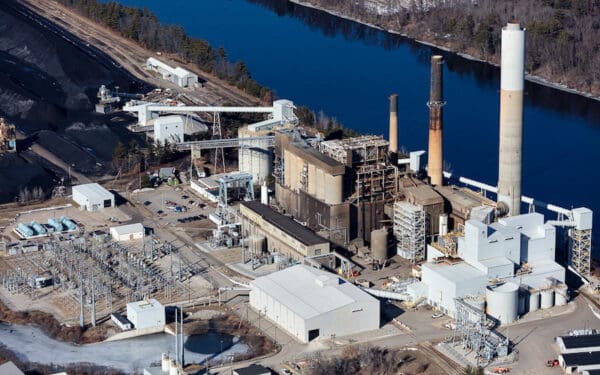
When it comes to electric vehicles, Vermont policymakers are stuck spinning their wheels. Photo Credit: Pixabay
Getting serious about tackling the climate crisis means getting around without burning fossil fuels. Unfortunately, most cars and trucks still run on gasoline, which pollutes both our air and our climate. In fact in New England, the exhaust from cars, trucks, and buses accounts for more than a third of our climate-damaging emissions. This needs to change.
Vermont needs to put at least 50,000 electric cars and trucks on the road by 2025 to meet the goals set forth in the State’s energy plan. With only around 3,000 on the road right now, we are far from on track to get there. We’ve made some small strides this year, but need to ramp up our work—and soon—to make real electric vehicle progress.
Overall Climate Progress Stalled during this Year’s Legislative Session
This past legislative session in Vermont proved a disappointment for climate action all around. The State mostly treaded water, with a few dollars and new features added to some good efforts such as boosting energy efficiency programs.
For transportation, a mere $1.1 million dollars was added to support electric vehicles. That’s a far cry from what is needed to meet our target and is far less than what other states are doing. It’s hard to see Vermont as a climate leader if it doesn’t put its money where its mouth is when it comes to cleaning up transportation.
But Vermont is making some progress in the transition away from gas-fueled cars and trucks to electric vehicles—laying groundwork that will hopefully bear fruit and build support for more robust policies and incentives down the road.
Plans Are in the Works to Boost Electric Vehicles
The $1.1 million dollars Vermont set aside for electric vehicles this past session will be mostly available as incentives to Vermonters with low- and moderate-incomes. This offers big affordability benefits to the people who need it most. They get help purchasing a new car and that car has lower maintenance and repair costs. And, based on current electricity rates, the “fuel” for an electric car costs the equivalent of paying about $1.50 per gallon for gas.
Setting an example for others in Vermont, the Legislature also ramped up the number of electric cars it intends to add to the state fleet. After 2019, 50% of purchased or leased state vehicles—which may include buses, trucks and cars for state business—must be plug-in electric vehicles or hybrids. This requirement grows to 75% in 2021.
The Vermont Legislature also directed further study to examine how our electric utilities, our current regulations, and our transportation facilities (like parking spaces and bus lots) can better support and be prepared for electric vehicles. Having more electric cars and trucks on the road will transform transportation. Goodbye gas stations and polluting underground storage tanks. Hello solar-powered charging stations.
How We’ll Reach this Clean Transportation Future
To reach that reality, the Legislature asked the Public Utilities Commission—which regulates utilities and electricity supply—to convene utilities, transportation officials, and others to evaluate special rates for electric vehicles and to craft better ways to manage charging. They’re also tasked with finding ways for all vehicles to help pay for public roadways (since electric vehicles do not contribute to the revenue collected through the gas tax).
Two utilities in Vermont already have electric vehicle charging rates designed to benefit customers. These sensible charging rates allow a customer to charge at home when costs are lower, or have the car automatically charged at times when less electricity is being used. This helps manage the electrical system better by using electricity when more supply is available, which lowers costs for everyone. While it’s good to think hard about charging and rates, Vermont already has this experience. It should now put more of these rates in place—not just study them more.
Vermont’s Public Utilities Commission also issued a recent report on promoting the ownership and use of electric vehicles after a nearly year-long investigation. The report highlighted the valuable role electric cars, trucks, and buses will play in reducing greenhouse gas emissions in Vermont. Recognizing the need for bold action, the chair of the Commission recently noted that a “wartime” effort is needed to meet Vermont’s electric vehicle goals, and that such an effort is necessary to address the climate crisis.
One key recommendation from this report that has already been adopted allows for vehicle charging stations to sell electricity by the kilowatt hour. Previously, charging stations could only sell electricity by the hour. This incentivized the owners of these stations to only install slower chargers so they could make more money. With this change, charging stations now have more reason to install fast chargers, which will make electric vehicle charging faster and more available.
Other recommendations follow suggestions made by CLF and focus on reducing the barriers to adopting electric vehicles. They include having better charging rates for electric vehicles, more and better incentives for people to buy these cars, and adding more electric vehicles to state, public transit, and school bus fleets. These efforts got a recent boost in the Upper Valley region of Vermont with a $3 million federal grant for electric buses and charging stations.
We Can’t Let Electric Vehicle Progress Stall Out
While folks are hungry for progress, it seems that when it comes to electric vehicles, Vermont policymakers are stuck spinning their wheels. The small progress of this legislative session will support bigger efforts, but those efforts can’t come fast enough.



